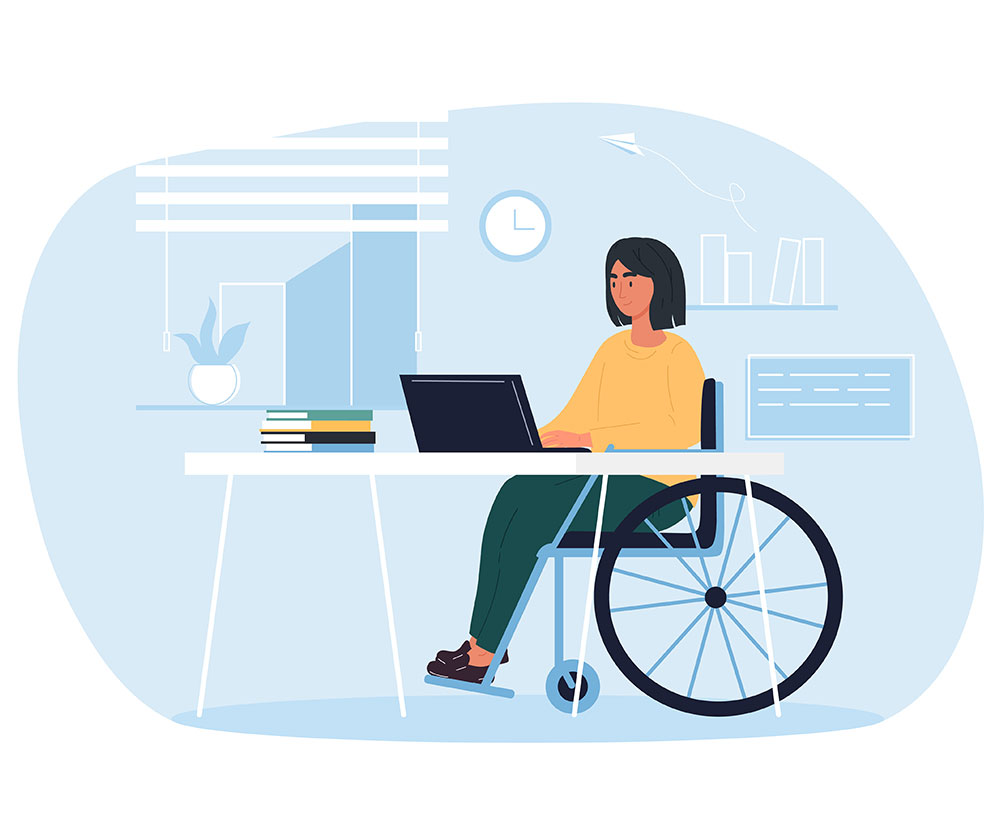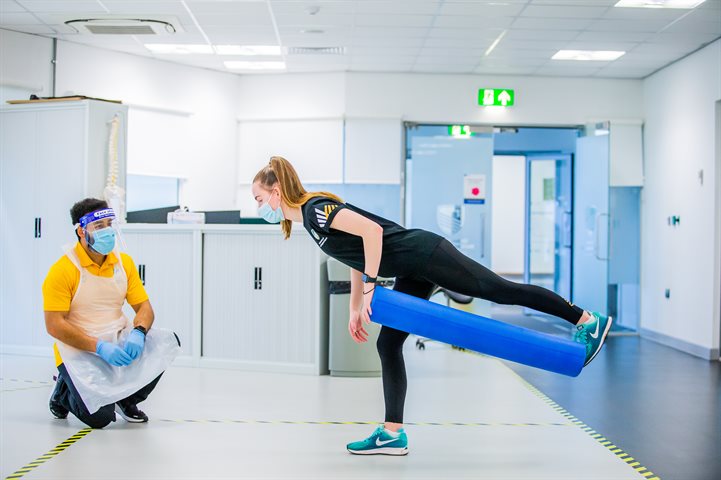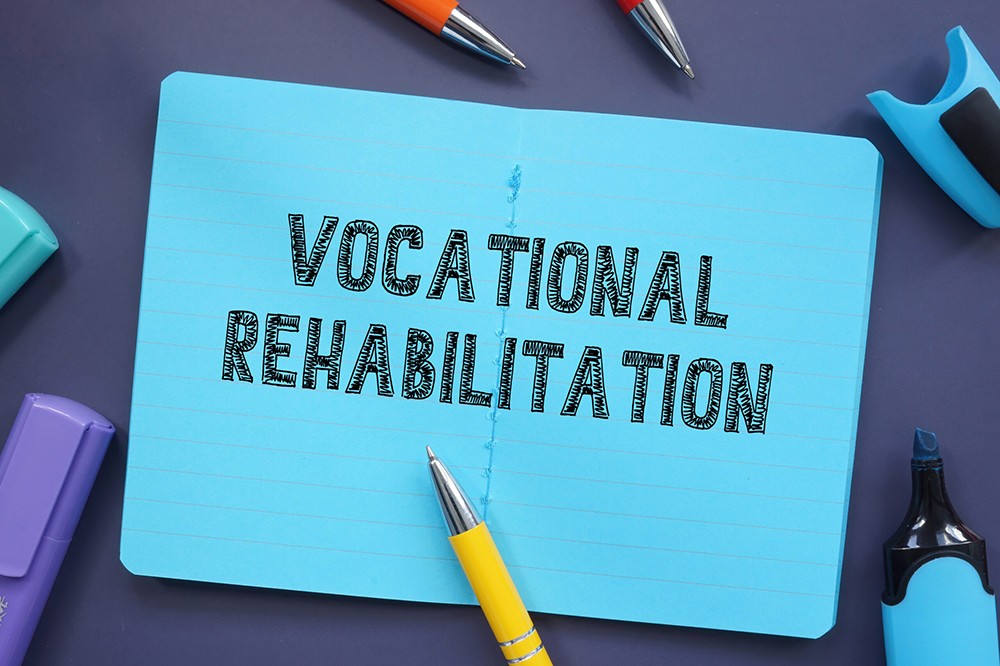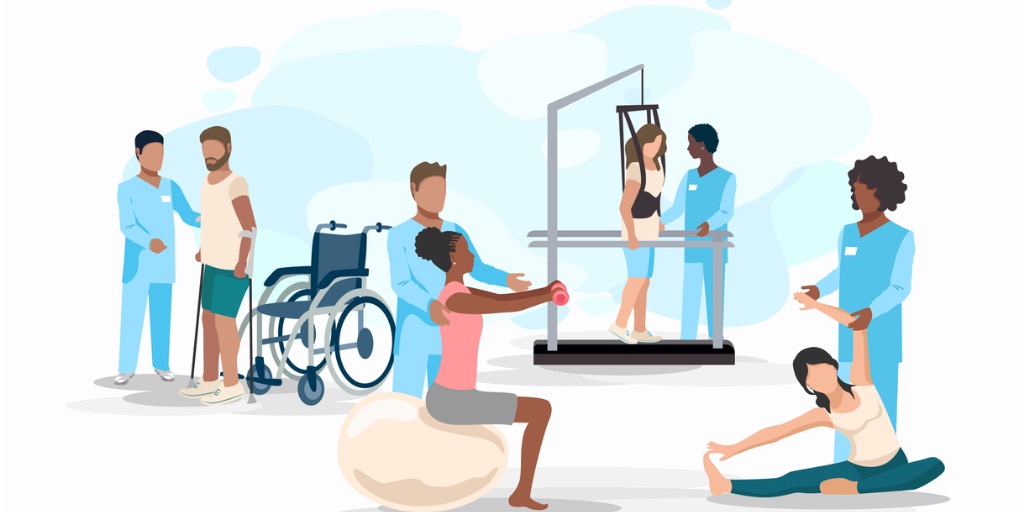Empowering Through Vocational Rehabilitation: Paving the Way for Inclusive Employment
A Comprehensive Exploration of Vocational Rehabilitation’s Role in Enhancing Lives and Societal Inclusion
In a world striving for inclusivity and equality, vocational rehabilitation stands as a beacon of hope for individuals with disabilities, equipping them with the tools and skills needed to enter and thrive in the workforce. This essay delves into the transformative realm of vocational rehabilitation, examining its significance, principles, and the far-reaching impact it has on individuals and society as a whole.

Redefining Opportunities Through Vocational Rehabilitation
Vocational rehabilitation is not just about finding a job; it’s about rewriting narratives, dismantling barriers, and creating opportunities for individuals with disabilities to lead self-reliant, meaningful lives. It’s a multifaceted approach that addresses not only employment but also personal growth, dignity, and social integration.
The Essence of Vocational Rehabilitation
Imagine a customized journey, tailored to the unique strengths and aspirations of each individual. Vocational rehabilitation is precisely that. It encompasses a range of services, interventions, and support mechanisms designed to help individuals with disabilities access, maintain, and advance in meaningful employment.
Principles of Vocational Rehabilitation
- Individual-Centered Approach: Similar to personalized marketing strategies, vocational rehabilitation centers on the individual’s needs, strengths, and goals. It’s about crafting a path that aligns with their interests and abilities.
- Skills Development: Just as honing skills in a chosen field is crucial for success, vocational rehabilitation offers skill-building opportunities. Individuals receive training, guidance, and mentorship to enhance their employability.
- Job Placement and Retention: Think of this as finding the perfect fit in a career. Vocational rehabilitation assists in job placement, ensuring the chosen role aligns with the individual’s skills and aspirations. Moreover, ongoing support is provided to help individuals thrive and retain their positions.
- Assistive Technology and Accommodations: Similar to optimizing workplaces for efficiency, vocational rehabilitation provides assistive technology and accommodations to ensure that individuals can perform their tasks effectively, irrespective of their disabilities.
Impact of Vocational Rehabilitation
- Personal Empowerment: Much like the empowerment gained from mastering a new skill, vocational rehabilitation empowers individuals to build a career, assert their independence, and contribute to their communities.
- Enhanced Self-Confidence: Similar to achieving milestones in life, vocational rehabilitation boosts self-esteem. The realization of one’s potential and the ability to excel professionally instills a sense of achievement and confidence.
- Economic Inclusion: Just as businesses benefit from diverse talent, vocational rehabilitation promotes economic inclusion. It enriches the workforce with diverse skills and perspectives, contributing to innovation and productivity.
- Reduced Dependency: Similar to gaining financial independence through a stable job, vocational rehabilitation reduces dependency on social support systems. Individuals become contributors to society rather than passive recipients.

Societal Transformation Through Vocational Rehabilitation
Vocational rehabilitation doesn’t just transform individual lives; it transforms societies. It fosters a culture of inclusion, where diversity is celebrated and individuals are judged by their abilities rather than their disabilities. Like a ripple effect, the impact of vocational rehabilitation spreads beyond the workplace, influencing attitudes, policies, and perceptions.
Vocational rehabilitation is a celebration of human potential. It’s a symphony that harmonizes determination, perseverance, and support. It’s a testament to the fact that everyone, regardless of their abilities, has a unique melody to contribute to the world. Much like a masterpiece that requires careful composition, vocational rehabilitation orchestrates success stories that resonate with the symphony of inclusion, empowerment, and societal progress.
Championing Inclusion: The Role of Advocacy and Policy
Vocational rehabilitation doesn’t operate in isolation. It thrives when supported by policies that champion equal opportunities and advocate for the rights of individuals with disabilities. Just as successful marketing campaigns are backed by a solid strategy, the impact of vocational rehabilitation is amplified when societies recognize the importance of creating an inclusive environment.
Legislation such as the Americans with Disabilities Act (ADA) in the United States and similar laws in other countries exemplify the commitment to breaking down barriers. These laws mandate that employers provide reasonable accommodations to enable individuals with disabilities to perform their jobs effectively. This integration of policies is akin to integrating SEO strategies for maximum impact.
The Role of Education and Training
Vocational rehabilitation doesn’t start at the workplace; it begins with education and training. Just as a strong foundation is essential for building a skyscraper, education equips individuals with disabilities with the skills and knowledge needed for a successful career.
Efforts in special education, adaptive learning techniques, and inclusive curricula lay the groundwork for vocational success. Transition programs that guide students from school to the workforce are analogous to creating a seamless customer journey in digital marketing.
Breaking Stereotypes and Shattering Glass Ceilings
Vocational rehabilitation serves as a powerful antidote to the stereotypes and misconceptions that surround disabilities. It’s like turning a critical eye on outdated marketing tactics and replacing them with strategies that resonate with modern audiences.
Individuals with disabilities have often been relegated to limited roles due to perceived limitations. Vocational rehabilitation challenges these assumptions, demonstrating that capabilities far outweigh disabilities. Just as marketing campaigns evolve to be more inclusive and representative, vocational rehabilitation challenges societies to redefine their perceptions of ability and potential.
From Stigma to Celebration: Shaping Public Perception
Vocational rehabilitation is not merely a process; it’s a catalyst for shifting societal perceptions. It’s similar to crafting a brand identity that resonates with the target audience. Just as brands strive to create a positive image, vocational rehabilitation encourages societies to celebrate diversity and recognize the unique contributions of individuals with disabilities.
By placing individuals with disabilities in workplaces and communities, vocational rehabilitation dismantles stigmas and fosters understanding. This interaction is comparable to engaging with customers through social media to create authentic connections.

A Call for Collaboration: Partnerships for Progress
The success of vocational rehabilitation lies in collaborative efforts. Just as partnerships between businesses create mutually beneficial outcomes, collaborations between vocational rehabilitation centers, educational institutions, employers, and governments foster a holistic ecosystem.
Employers play a pivotal role in this ecosystem. Companies that embrace diversity and actively seek to hire individuals with disabilities set an example for others. They demonstrate that hiring decisions should be driven by skills and potential rather than preconceived notions.
Conclusion: The Ever-Evolving Landscape of Inclusion
Vocational rehabilitation is not a static concept; it’s an ever-evolving landscape that adapts to the changing needs of society. Much like digital marketing strategies that pivot based on audience preferences, vocational rehabilitation shifts to align with emerging technologies, workplace dynamics, and societal values.
In a world that recognizes the importance of inclusivity, vocational rehabilitation stands as a testament to the power of human resilience, innovation, and collaboration. It illustrates that barriers can be overcome, limitations can be transcended, and opportunities can be created for all. By weaving the threads of education, policy, advocacy, and social change, vocational rehabilitation creates a tapestry of inclusivity where every individual’s potential is celebrated, their contributions valued, and their journey towards self-reliance and fulfillment embraced with open arms.
